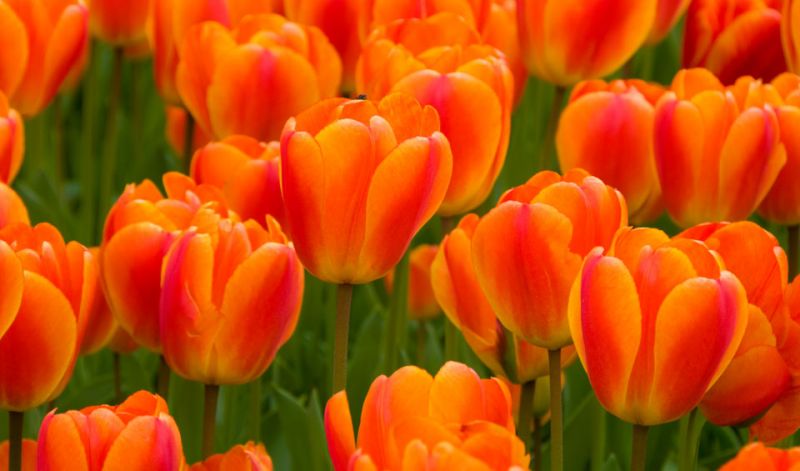Tulipa Darwin Hybrid group
("Tulip")

Single flowered varieties, long stemmed, mid season flowering.
What You Need To Know Before You Plant:
When Will This Flower Bloom?
Mid Spring
When Should I Buy and Plant These Bulbs?
Fall
What Kind of Light Does This Bulb Prefer?
Full sun to partial shade
What Color Will the Flower Be?
See 'popular varieties'
How Far Apart Should I Plant These Bulbs?
4 in / 10 cm
How Deep Should I Dig?
7 in / 18 cm
How Tall Will It Grow?
16-20 in / 40-50 cm
Recommended Number of Bulbs Per Square Foot?
5
Is It Deer/Critter Resistant?
No
How Can I Best Use It in My Landscaping?
In flower beds, borders, amongst perennials, and as cutflowers.
Other Popular Varieties
'Ad Rem' (orange-red, yellow edges), 'American Dream' (yellow and red), 'Apeldoorn' (vermillion red), 'Apeldoorn's Elite' (red and orange-yellow), 'Beauty of Apeldoorn' (orange-yellow-red striped), 'Daydream' (orange), 'Golden Apeldoorn' (lemon-yellow), 'Golden Oxford' (bright yellow), 'Golden Parade' (yellow, small red edges), 'Ivory Floradale' (ivory white, spotted carmine), 'Ollioules' (pink and white), 'Oxford' (vermillion red), 'Parade' (bright red), 'Pink Impression' (pink), 'Red Impression' (red) and 'World's Favorite' (red, yellow edges).
About the Family
Tulipa Family
The genus's native range ranges from as far West as Southern Europe, North Africa, Anatolia and Iran to the Northwest of China. The tulip's centre of diversity is in the Pamir, Hindu Kush and Tien Shan mountains. Although tulips are nowadays often associated with The Netherlands, commercial cultivation of the bulbs and flowers began during the Ottoman Empire. The name is ultimately derived from the Persian 'dulband' (turban). These days it is by far the most popular bulbous plant. Tulips are to Holland what champagne is to France: a national treasure. Cultivated there since the end of the 16th Century, tulips are grown by the billions (capital B) today, with the majority of them being exported either as bulbs or as cut flowers. Currently there are more than 3,000 cultivated varieties registered, with more being added (after sometimes years of hybridizing- and selection-procedures) to replace older varieties or to introduce yet another brand new type or color combination.
Read More About the Family


